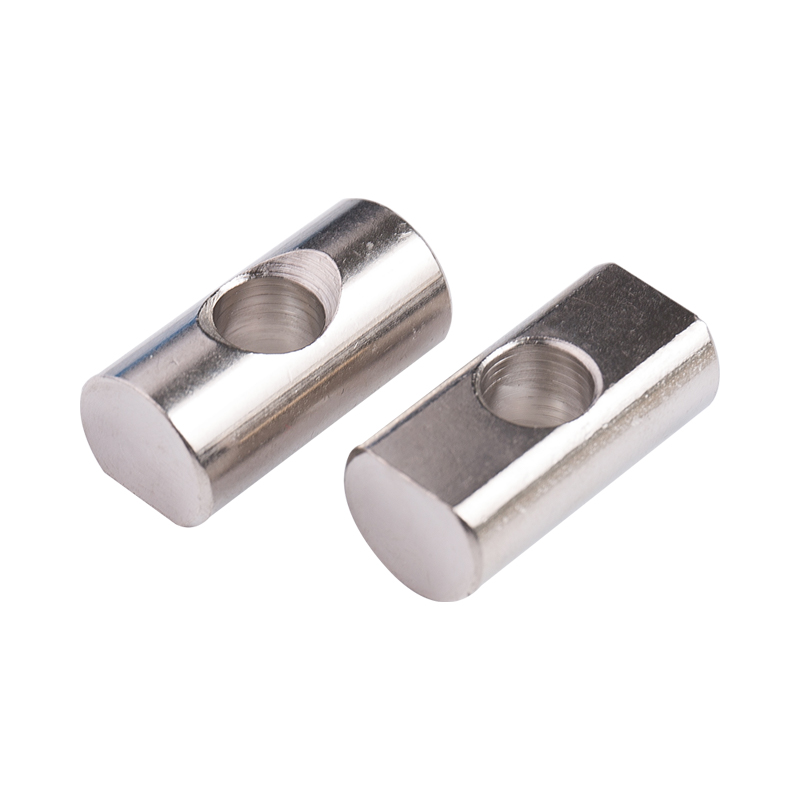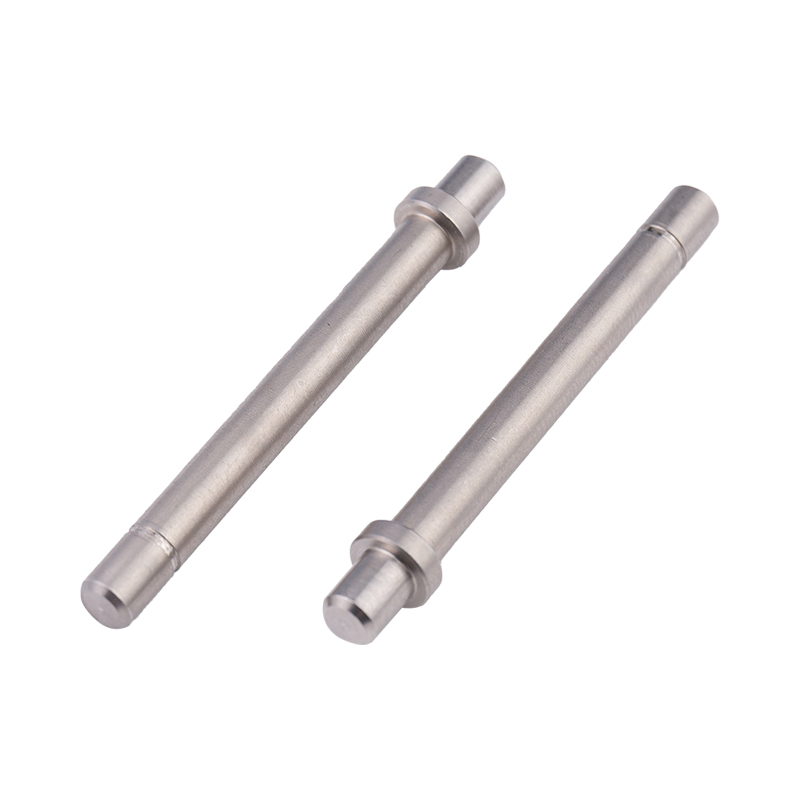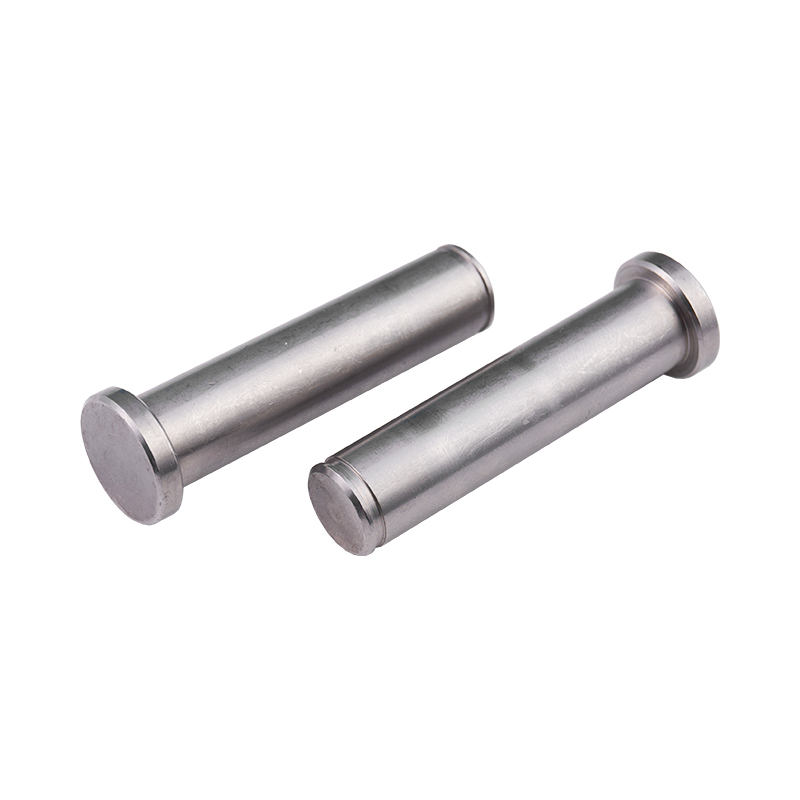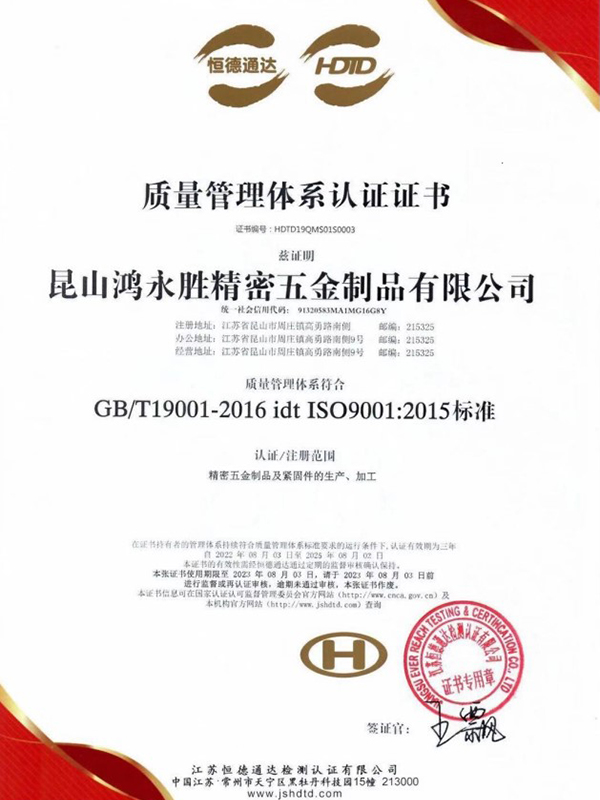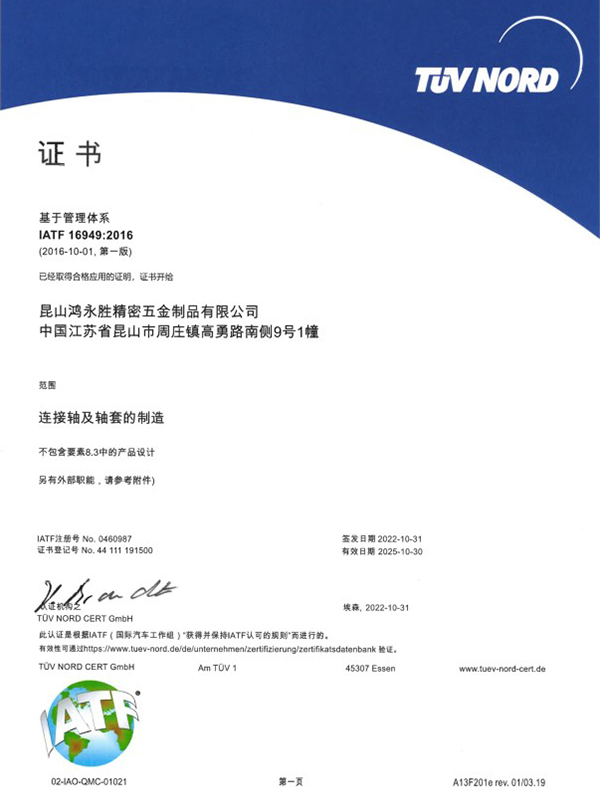Carbon Steel Bolt Supplier Guide: What Buyers Should Look For Selecting the right supplier for carbon steel bolts affects product performance, safety, and long-term cost. This guide breaks down the p...
READ MOREThe company has obtained two quality system management certificates of ISO9001:2015 and IATF16949:2016.
At present, the company has been for Japan, Sweden, the United States, Singapore, Malaysia, Hong Kong and the Pearl River Delta and many other customers to provide services, now the main customers are: Japan Sharp (SHARP), Japan SMC, Japan Panasonic (Panasonic), the Swedish automobile VOVOL, etc., all the fixed assets investment of more than 30 million dollars, welcome friends from all walks of life to the factory to visit, study, consulting and come! We welcome friends from all walks of life to visit our factory, investigate, consult and come to us for sample processing.
We are looking forward to establishing a good business partnership with you with mutual trust and reciprocity!
-
-
Introduction: The Foundation of Mechanical Systems In the intricate world of modern manufacturing and engineering, machined parts form the fundamental building blocks of virtually every mechanical sys...
READ MORE -
Why Structural Integrity Matters In construction, machinery, and other industrial applications, structural integrity is crucial for safety, performance, and longevity. One of the key elements in ensur...
READ MORE -
Introduction to Stainless Steel Fasteners Stainless steel fasteners are widely used in construction, machinery, and industrial applications due to their corrosion resistance and durability. Among them...
READ MORE
How do automotive retaining pins ensure engine stability?
The ways in which automotive retaining pins ensure engine stability are primarily reflected in the following aspects:
Precise Positioning:Locating pins are used to precisely position the engine within the vehicle’s engine compartment. By using locating pins, the engine can be securely fixed to the vehicle’s frame or subframe.
Vibration and Shock Control:The engine generates vibrations during operation. Locating pins are typically used in conjunction with damping elements (such as rubber pads or hydraulic mounts) to absorb and isolate the vibrations generated by the engine, thereby reducing the vibrations transmitted to the vehicle body.
Load Distribution:Engine locating pins are usually distributed at multiple points on the engine to ensure that the weight of the engine and the forces generated during operation are evenly distributed across the vehicle structure.
Displacement Prevention:Locating pins prevent the engine from shifting due to uneven road surfaces, rapid acceleration, or sudden deceleration while the vehicle is in motion.
Long-term Stability:The design of locating pins and their connecting components must consider long-term durability and reliability to ensure the stability of the engine’s position throughout the vehicle’s lifespan.
Thermal Expansion Compensation:The engine expands due to heat during operation. The design of locating pins needs to account for the impact of thermal expansion on engine positioning, sometimes incorporating elastic elements to compensate for thermal expansion.
Corrosion and Oxidation Resistance:The materials and surface treatments of locating pins must be able to resist corrosion and oxidation to ensure that their performance is maintained under various environmental conditions.
Maintenance and Replacement:The design of locating pins should also consider the convenience of maintenance and replacement, ensuring that they can be easily inspected and replaced when necessary.
Through these design and application measures, automotive retaining pins can ensure that the engine remains stable under various conditions, thereby enhancing vehicle performance and ride comfort.



 русский
русский Español
Español